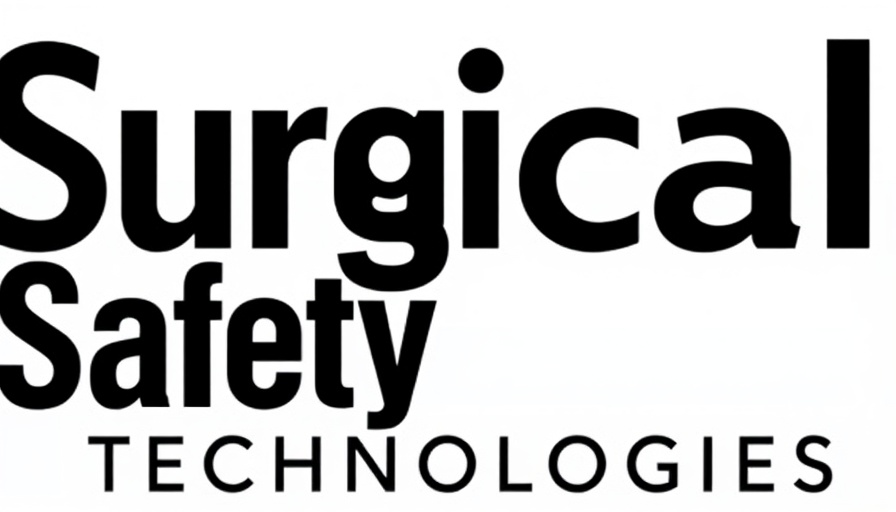
The Future of Surgical Procedures: How Technology is Redefining the Operating Room
Surgical Safety Technologies (SST) has recently launched two innovative mobile applications, Room State™ and Explorer™, designed to transform surgical workflows and enhance education in the operating room environment. These advancements not only aim to lift the burden off medical staff but also promise improved efficiency and education, a crucial aspect waiting to be explored, especially by parents concerned about their children's healthcare experiences.
Real-Time Surgical Communication: A Game Changer
In today's fast-paced surgical landscape, traditional methods for managing operating room schedules and communication can become cumbersome and inefficient. The introduction of Room State™ signifies a paradigm shift. This application utilizes integrating artificial intelligence to automate updates regarding surgical cases, notifying surgeons about critical milestones in real time. For instance, it replaces manual communication, reducing the chances for human error, which often leads to significant delays in patient care.
Dr. Jeffrey Cadeddu, a prominent figure in minimally invasive surgery, highlights how this app has effortlessly improved his daily operations. He appreciates having real-time data at his fingertips, which has allowed him to better manage his time, leading to lower stress levels and an increased ability to round on patients rather than waiting idly for the operating room to be prepared.
Transforming Surgical Education: Beyond the OR
The Explorer™ app is not just a tool for surgeons; it's also a bridge between education and practice. With surgical techniques evolving rapidly, keeping current is essential. The Explorer™ serves as an extensive library of surgical videos accessible from any location, empowering surgeons with resources for continued learning and self-assessment.
This feature is particularly noteworthy for parents seeking to understand how advancements in medical education could influence their children's healthcare journey. Well-educated healthcare professionals can provide better care and make informed decisions that directly affect the well-being of patients, including their children. AI-driven video assessments facilitate a more structured form of feedback, ensuring high standards of medical practice are upheld continuously.
Implications for Healthcare and Its Accessibility
As experts around the healthcare landscape advocate for leveraging technology to enhance patient care, the advent of these applications could redefine how early health education is perceived by both medical professionals and families. By providing easier access to surgical procedures and outcomes shared via these apps, families can feel more informed about their medical choices and instill a sense of confidence in the healthcare system.
The technology not only aims to enhance efficiency within surgical environments but also fosters a community of transparency and knowledge accessibility that can benefit everyone, especially parents lifting the veil on what goes on during surgical procedures.
Why Parents Should Pay Attention
The integration of AI in surgical workflows and educational tools like Room State™ and Explorer™ emphasizes a pivotal trend: technology enhancing human capabilities in critical environments. For parents with children who might someday require surgical intervention, understanding these advancements can lead to more informed discussions with healthcare professionals. It can also empower them to advocate for their children's needs during medical visits.
Moreover, encouraging open dialogues around technology and its role in health education can inspire the next generation of healthcare problem-solvers. Parents have an opportunity to not only familiarize themselves with such tools but also instill a proactive approach to their children's health education from an early age.
Call to Action: Empower Yourself with Knowledge
As SST continues to innovate and integrate technology into surgical processes, parents and guardians are encouraged to stay engaged in learning about these changes. This isn't just about healthcare; it's about fostering an informed and empowered community that prioritizes well-being and education. Explore more about how you can make informed decisions regarding your children's healthcare and advocate for them effectively. Embrace these advancements and ask your healthcare providers how such technologies are integrated into their practice.
 Add Row
Add Row  Add
Add 




Write A Comment